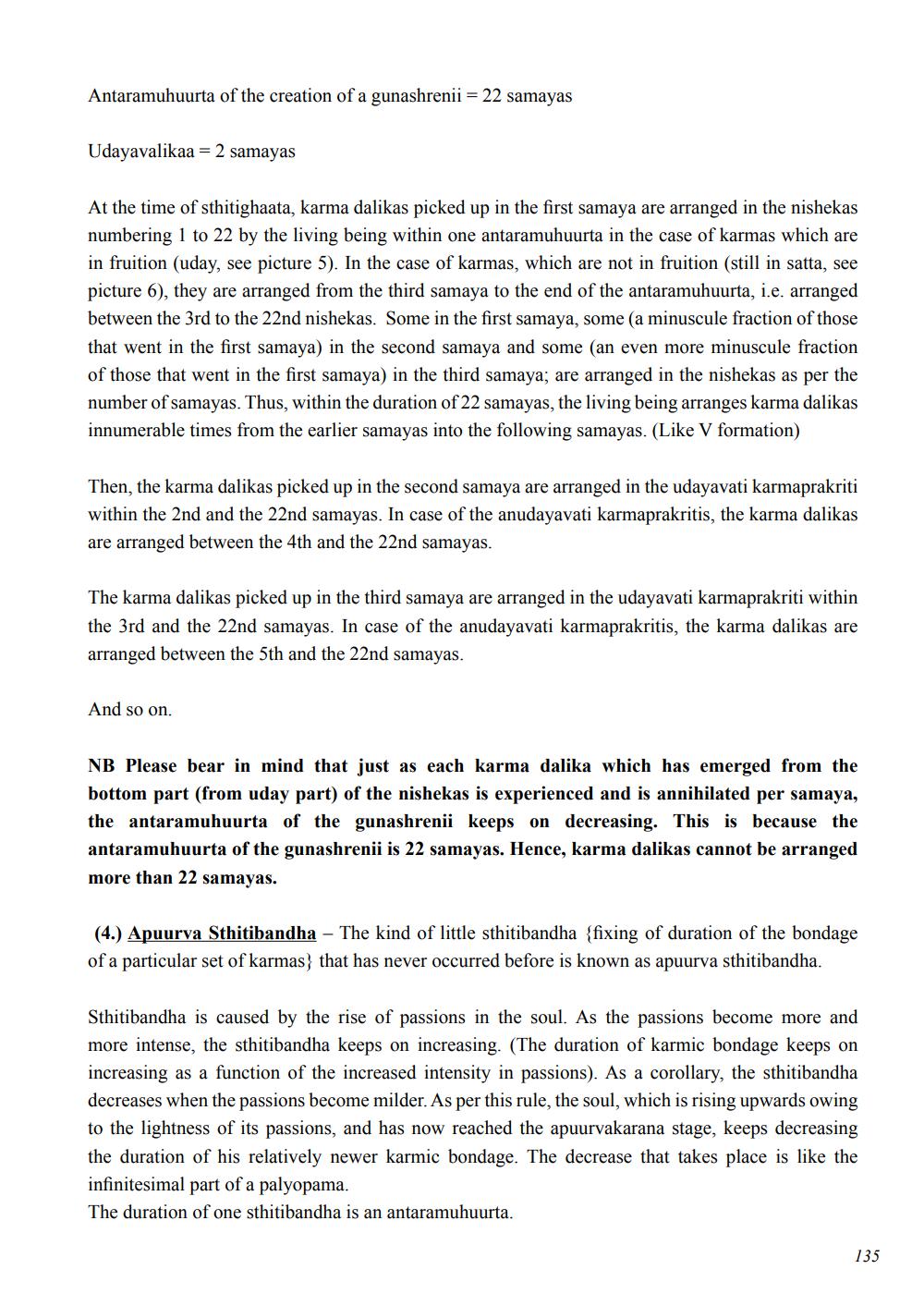________________
Antaramuhuurta of the creation of a gunashrenii = 22 samayas
Udayavalikaa = 2 samayas
At the time of sthitighaata, karma dalikas picked up in the first samaya are arranged in the nishekas numbering 1 to 22 by the living being within one antaramuhuurta in the case of karmas which are in fruition (uday, see picture 5). In the case of karmas, which are not in fruition (still in satta, see picture 6), they are arranged from the third samaya to the end of the antaramuhuurta, i.e. arranged between the 3rd to the 22nd nishekas. Some in the first samaya, some (a minuscule fraction of those that went in the first samaya) in the second samaya and some (an even more minuscule fraction of those that went in the first samaya) in the third samaya; are arranged in the nishekas as per the number of samayas. Thus, within the duration of 22 samayas, the living being arranges karma dalikas innumerable times from the earlier samayas into the following samayas. (Like V formation)
Then, the karma dalikas picked up in the second samaya are arranged in the udayavati karmaprakriti within the 2nd and the 22nd samayas. In case of the anudayavati karmaprakritis, the karma dalikas are arranged between the 4th and the 22nd samayas.
The karma dalikas picked up in the third samaya are arranged in the udayavati karmaprakriti within the 3rd and the 22nd samayas. In case of the anudayavati karmaprakritis, the karma dalikas are arranged between the 5th and the 22nd samayas.
And so on.
NB Please bear in mind that just as each karma dalika which has emerged from the bottom part (from uday part) of the nishekas is experienced and is annihilated per samaya, the antaramuhuurta of the gunashrenii keeps on decreasing. This is because the antaramuhuurta of the gunashrenii is 22 samayas. Hence, karma dalikas cannot be arranged more than 22 samayas.
(4.) Apuurva Sthitibandha - The kind of little sthitibandha (fixing of duration of the bondage of a particular set of karmas) that has never occurred before is known as apuurva sthitibandha.
Sthitibandha is caused by the rise of passions in the soul. As the passions become more and more intense, the sthitibandha keeps on increasing. (The duration of karmic bondage keeps on increasing as a function of the increased intensity in passions). As a corollary, the sthitibandha decreases when the passions become milder. As per this rule, the soul, which is rising upwards owing to the lightness of its passions, and has now reached the apuurvakarana stage, keeps decreasing the duration of his relatively newer karmic bondage. The decrease that takes place is like the infinitesimal part of a palyopama. The duration of one sthitibandha is an antaramuhuurta.
135




